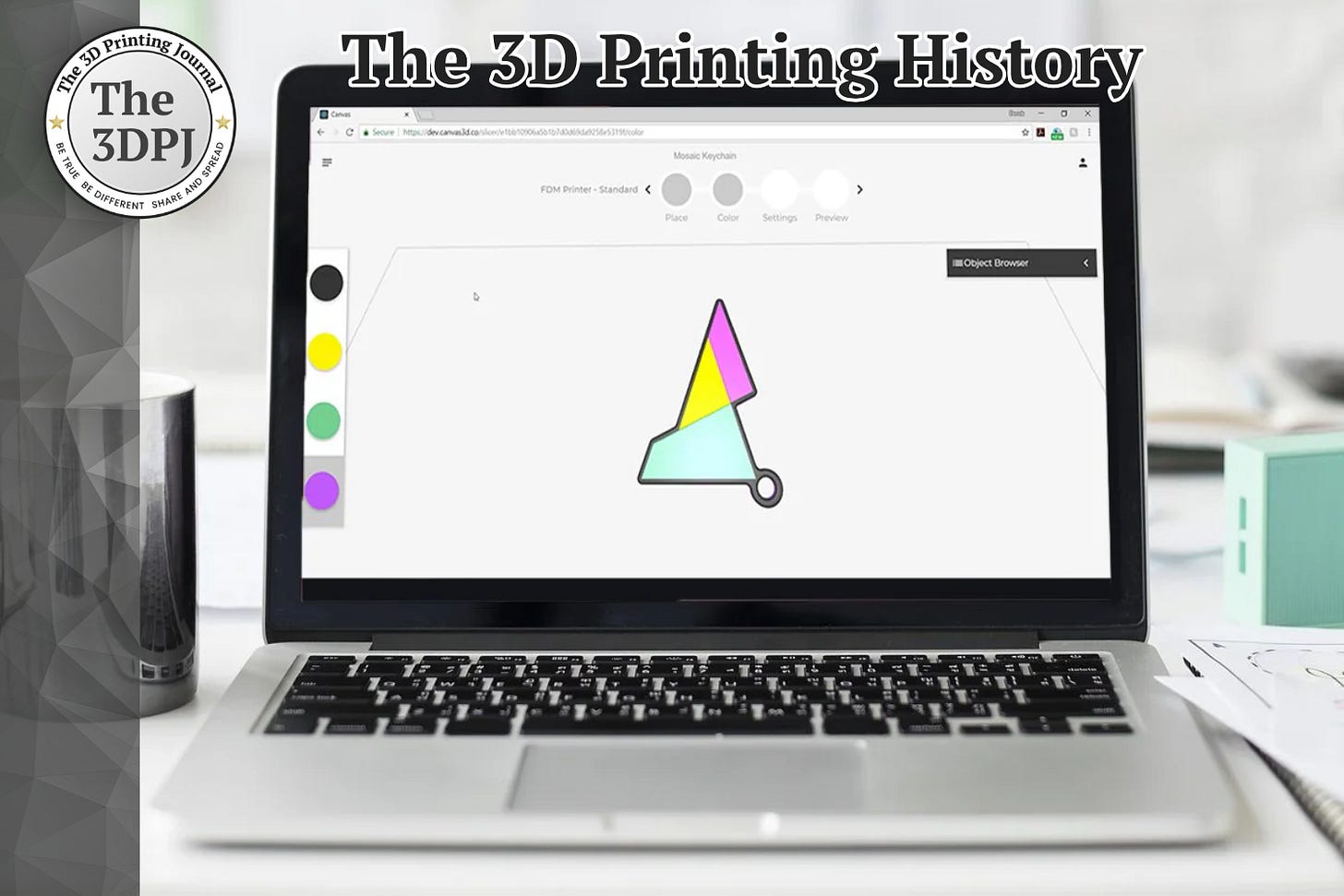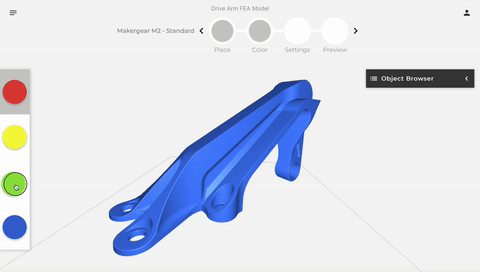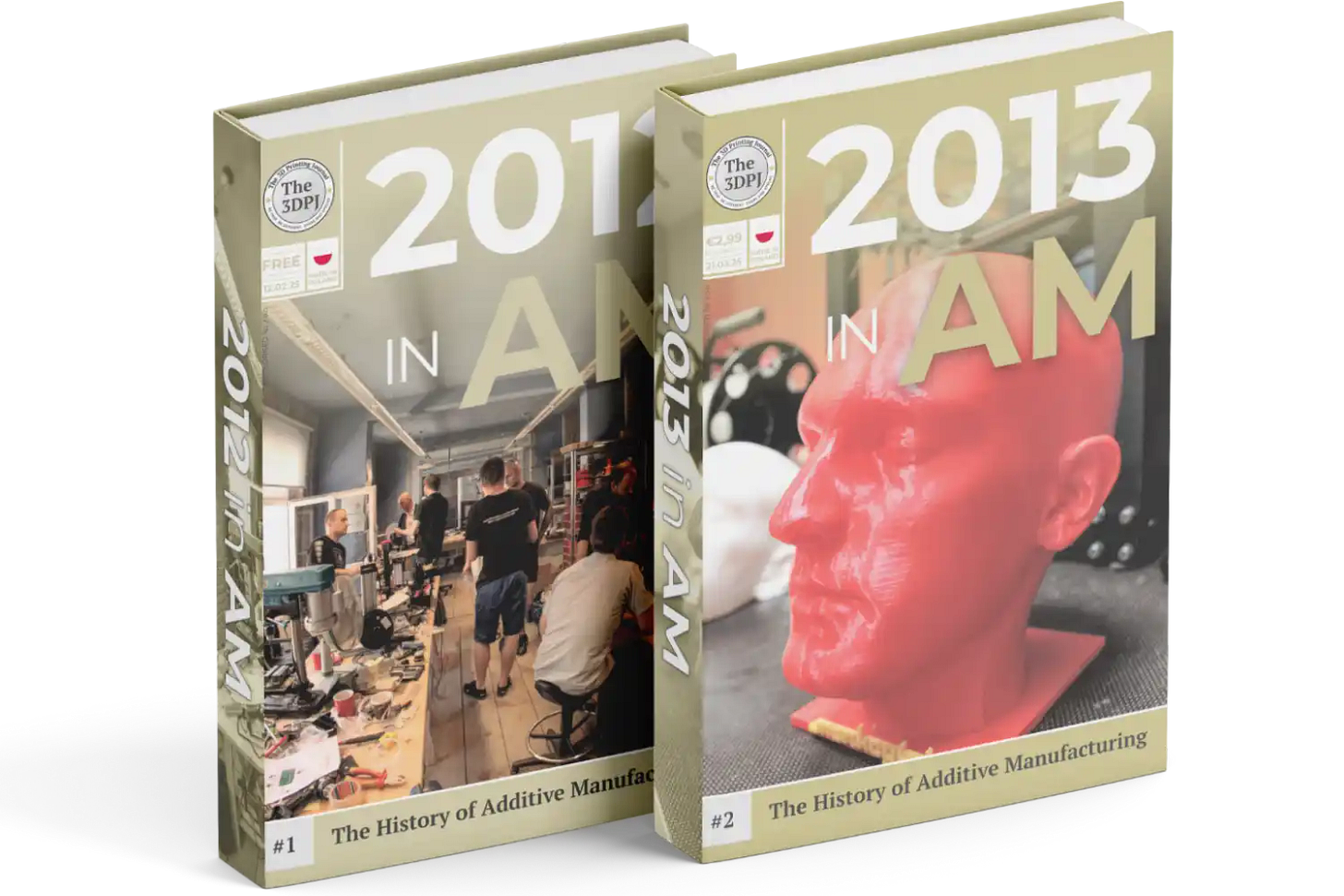05-01-2017: Mosaic Manufacturing introduced the CANVAS software
A platform for multi-color, multi-material 3D printing
On May 1, 2017, Mosaic Manufacturing released the beta version of CANVAS. It was the first solution of its kind dedicated to FFF 3D printing with multiple materials. Fully cloud-based, the platform was integrated with other Mosaic products, such as the Palette, Palette+, and later, the Palette 2. CANVAS addressed fundamental infrastructure gaps in the 3D printing ecosystem that had, until that point, significantly limited the development of multi-material printing technology.
By 2017, the market lacked effective and affordable hardware solutions capable of simultaneous multi-filament printing. Even with the introduction of devices like the Mosaic Palette, software remained a major obstacle—existing slicers were not designed to handle complex, multi-material prints. Users had to navigate unintuitive interfaces, manually assign colors, and process G-Code files through multiple tools. The workflow was inefficient, time-consuming, and prone to error.
In this context, CANVAS represented a major step forward. The platform allowed users to prepare multi-material prints in a simple and fast manner, offering features such as automatic model alignment, drag-and-drop color assignment, cloud-based slicing and storage, and integration with Mosaic's proprietary post-processing engine, Chroma.
The software operated entirely in the browser, removing the need for powerful computers to process large 3D models. CANVAS also introduced an easy way to add color to single-color STL files, which became a key factor in popularizing multi-color 3D printing.
Additionally, Mosaic’s software introduced the concept of "intelligent slicing," based on analyzing user behavior. This approach was designed to eventually allow automatic adjustment of print settings tailored to specific printers and materials.
The platform underwent numerous updates and improvements, including the implementation of advanced algorithms for transition material optimization, a recommendation system based on real print data, and expanded support for many 3D printer models available on the market. As a cloud-based solution, CANVAS also aligned with the broader trend of centralizing and automating additive manufacturing workflows, particularly in educational and semi-professional environments.
Today, it is regarded as a tool that helped transform a complex technical procedure into a user-friendly process—fulfilling Mosaic's mission and meeting the evolving needs of the growing 3D printing industry.
Source: www.mosaicmfg.com





